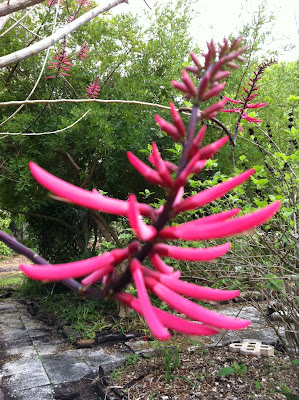Despite the difficulties commercial beekeepers face, it is not uncommon to find wild colonies of honeybees on campus. They have been found in Laurel Oaks, Live Oaks, and Cabbage Palms. Now we have a colony in a fig tree -- not in a cavity but out in the open.
We've contacted a local beekeeper who may be able to both remove and save the colony, which faces an uncertain future out in the open as winter approaches. We may even get some honey, but the beekeeper cautions that this late season honey is likely to be from Brazilian Pepper and Melaleuca, which are considered commercial, not table, grade honey.


